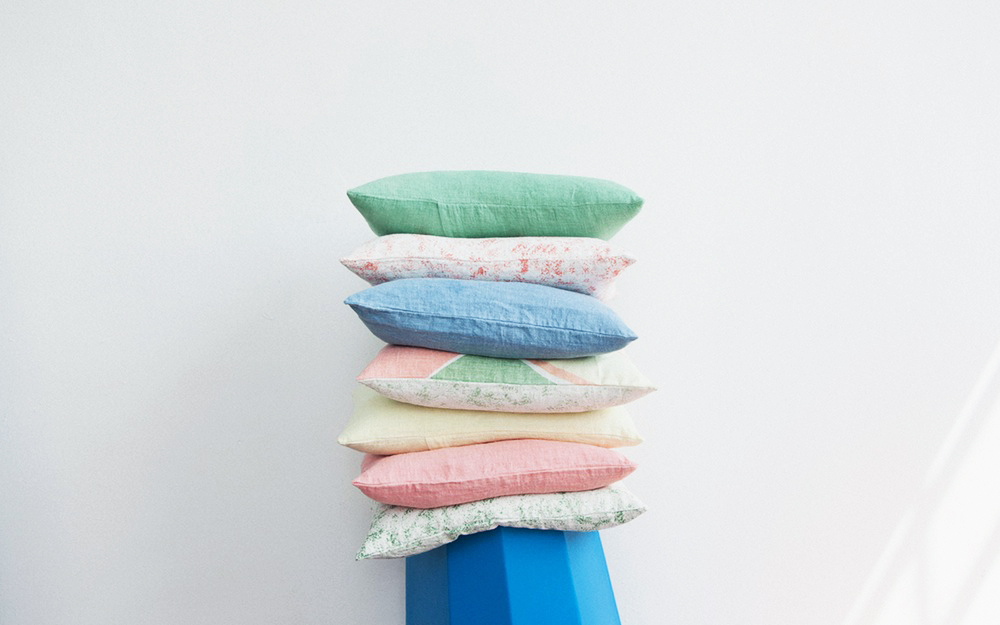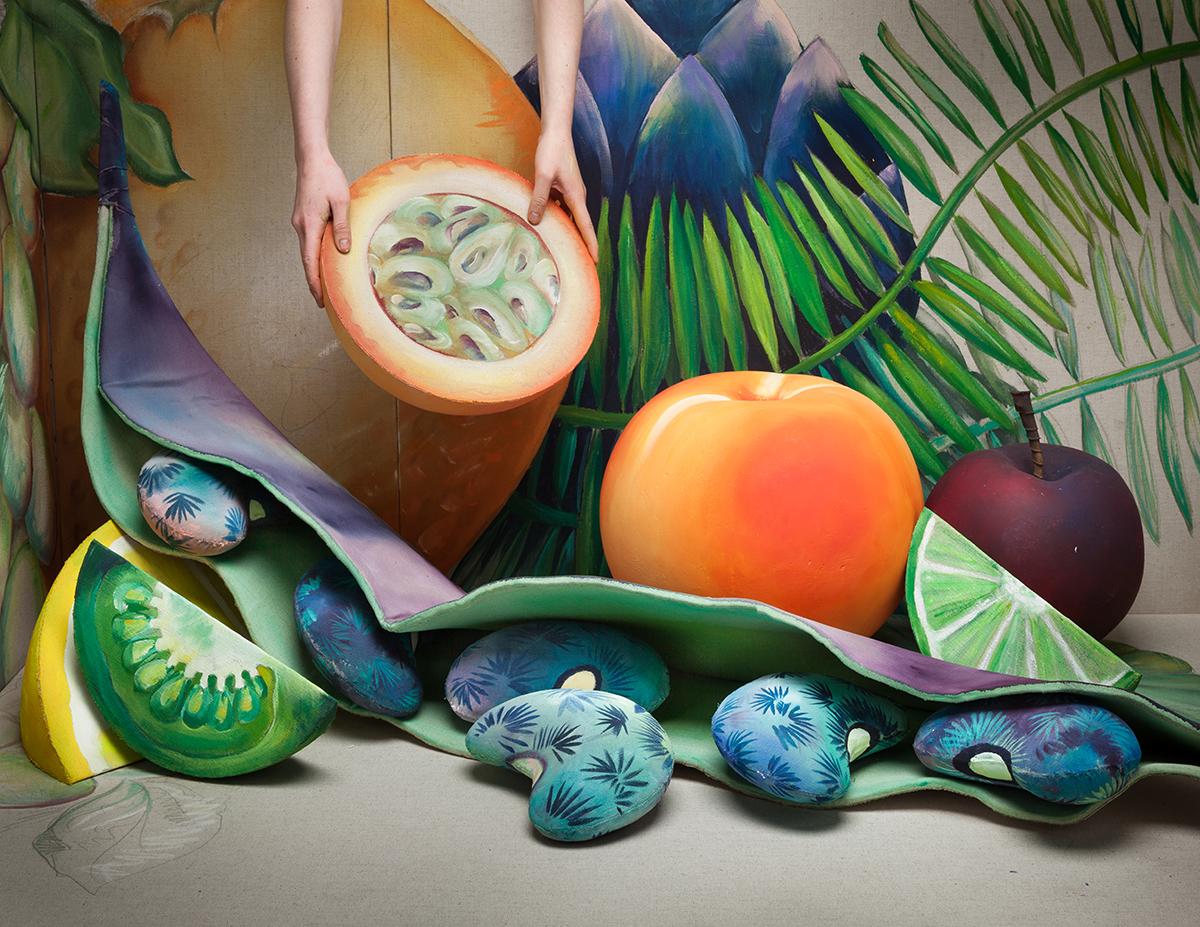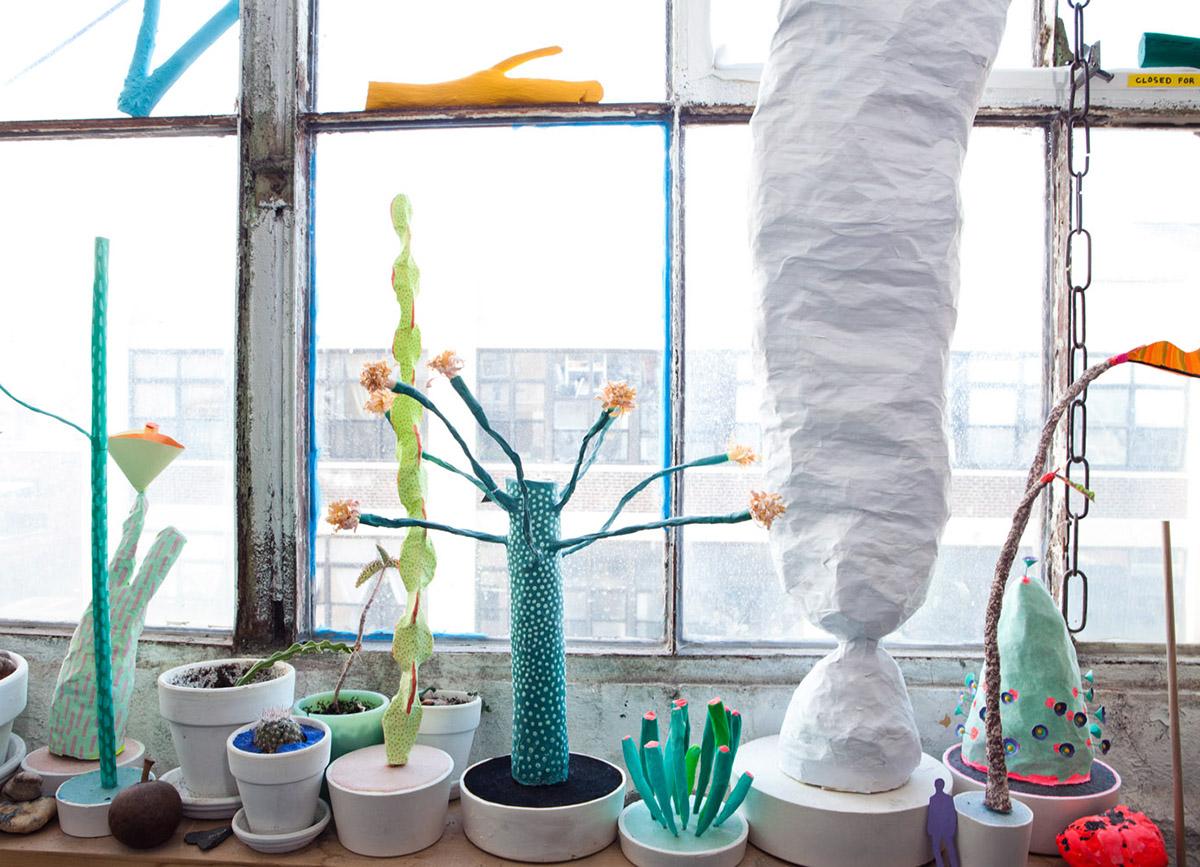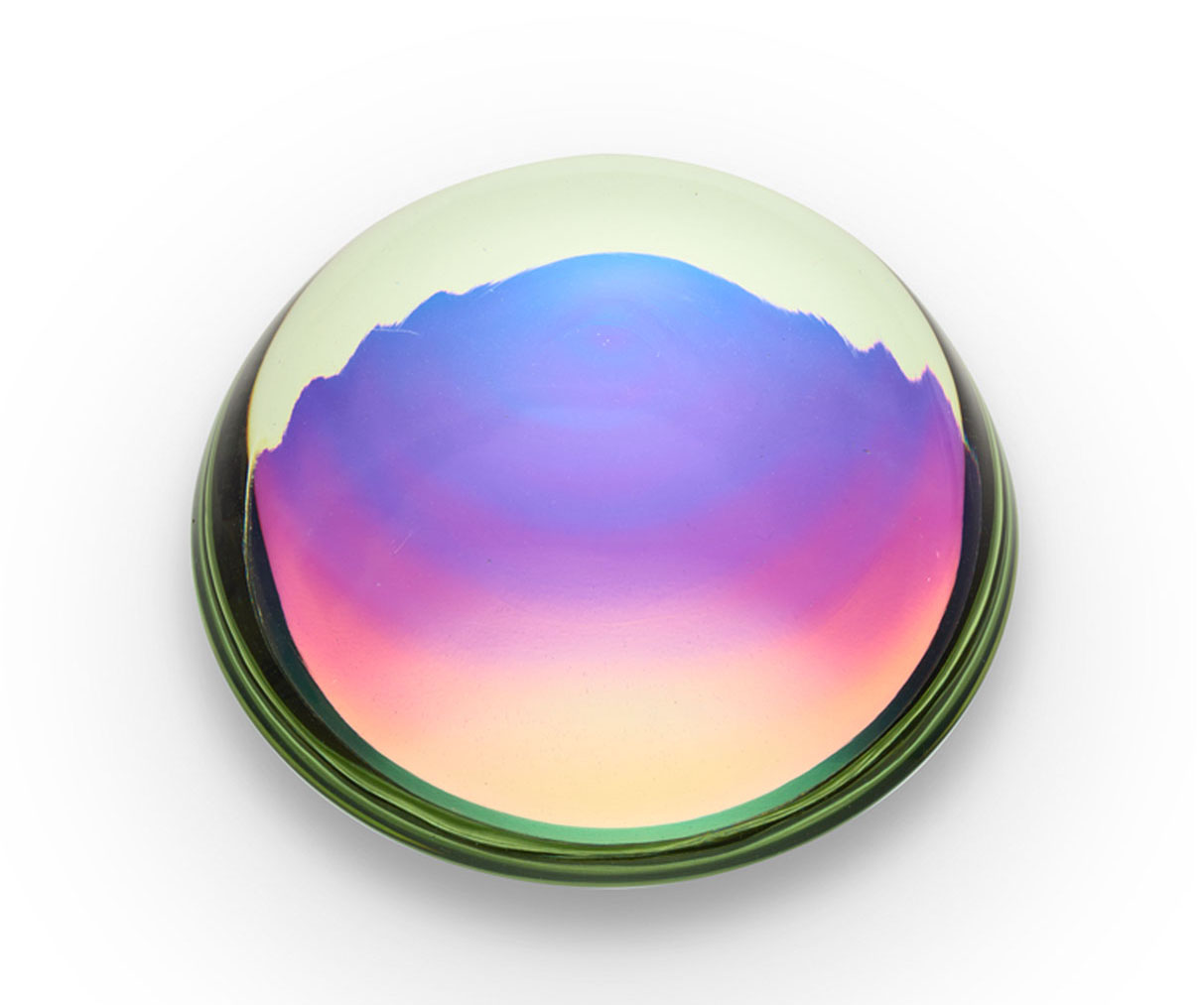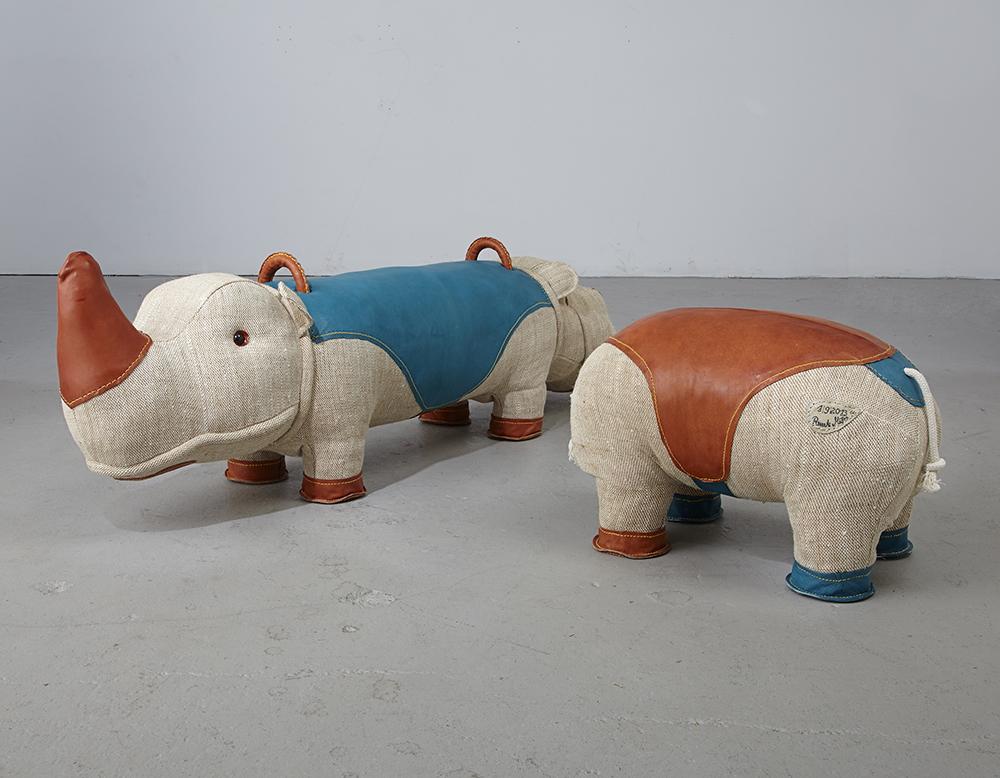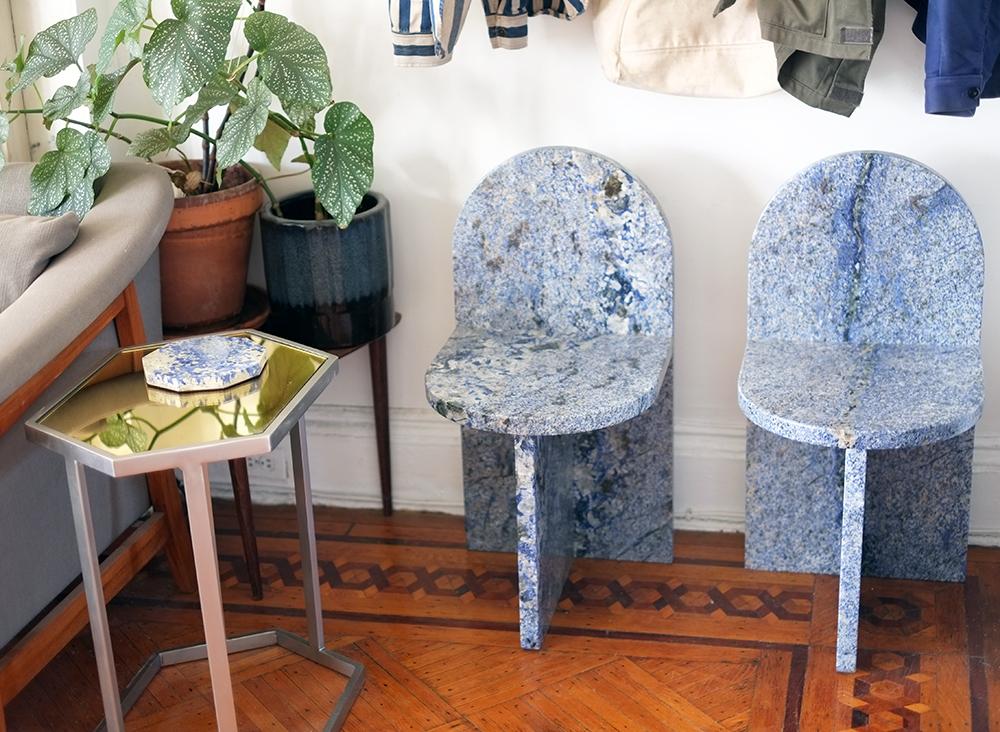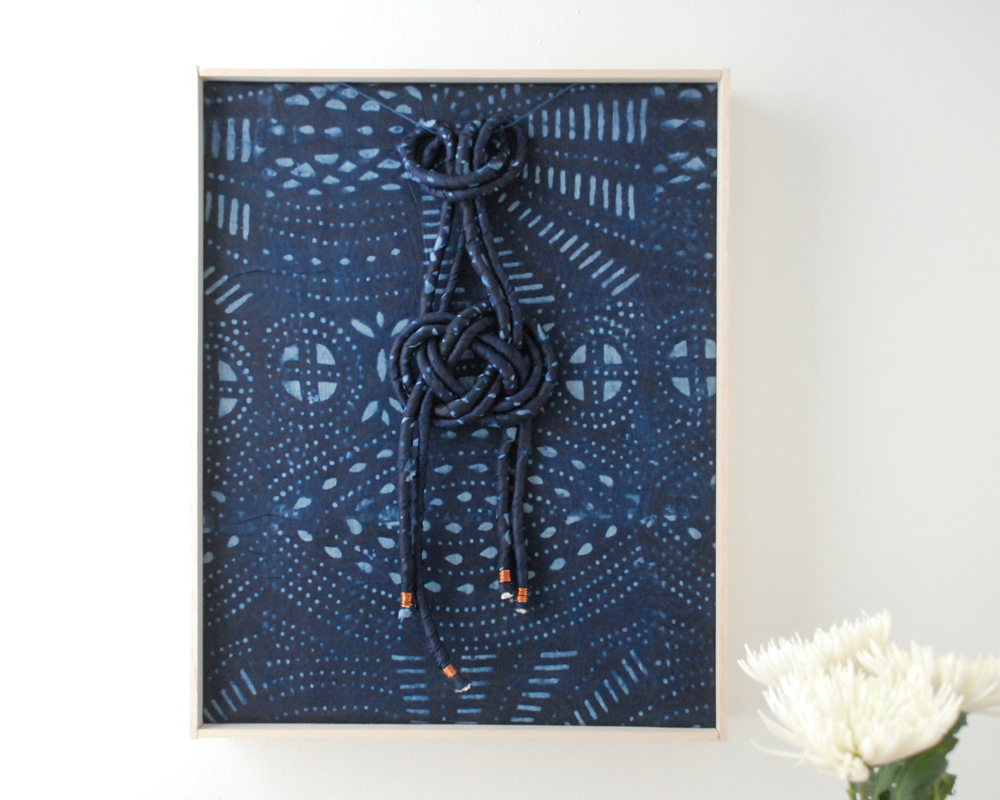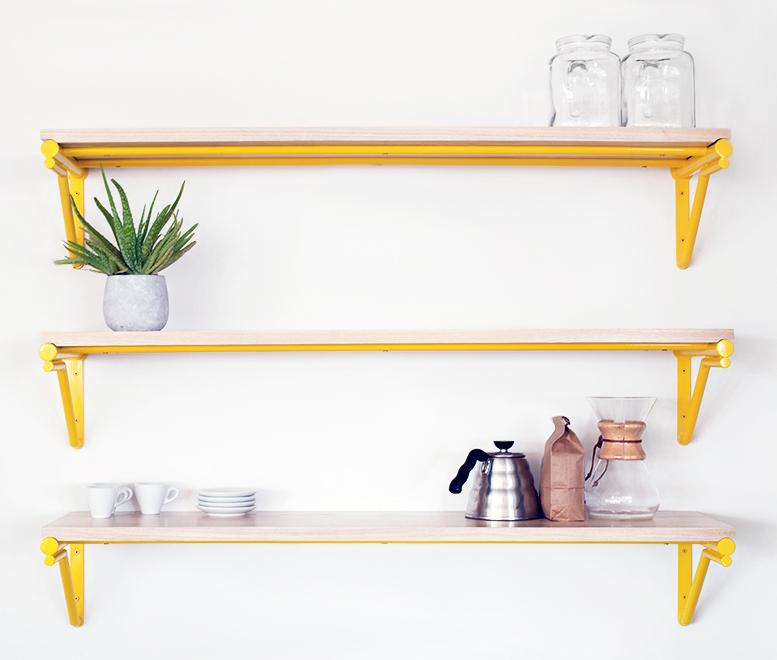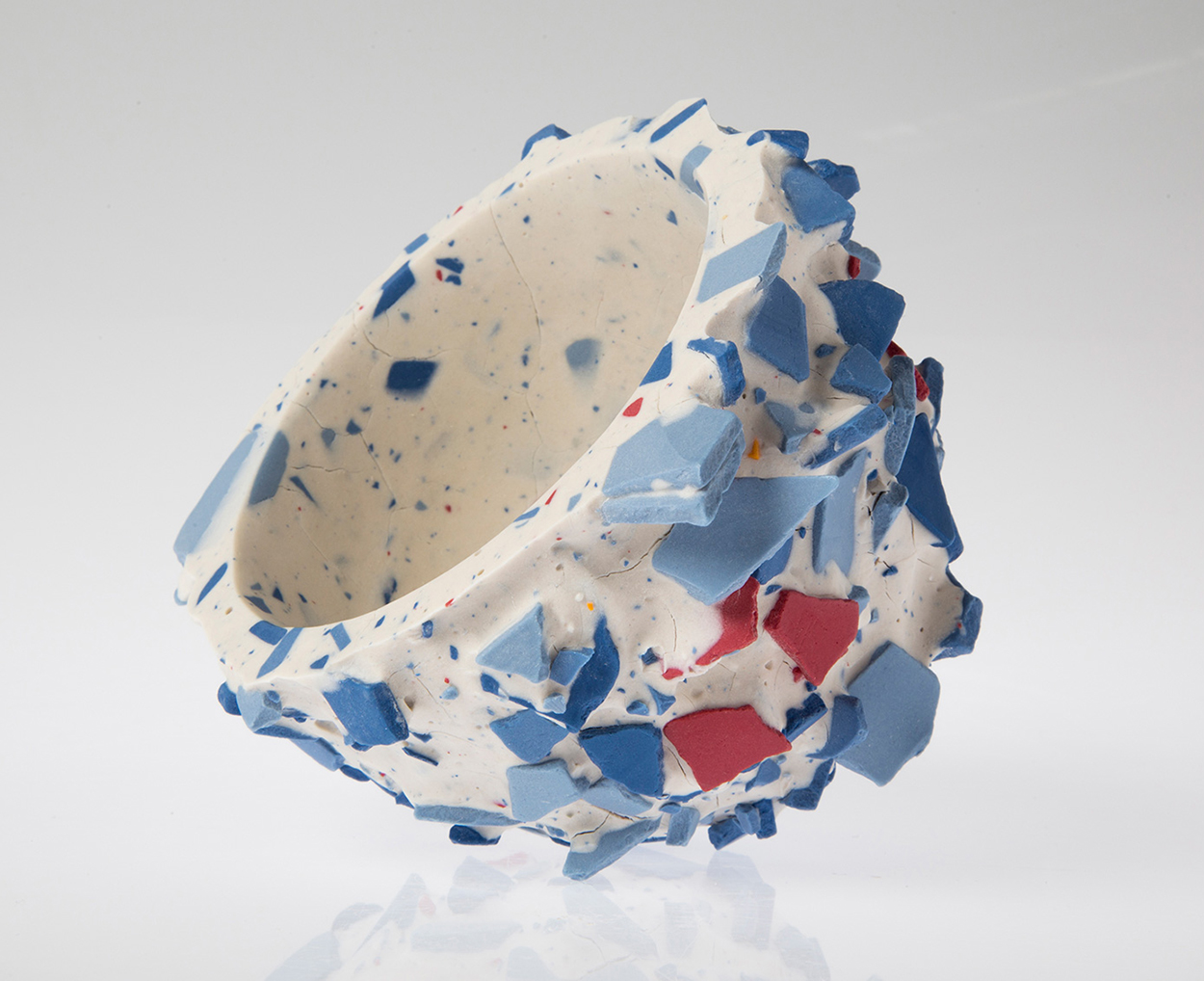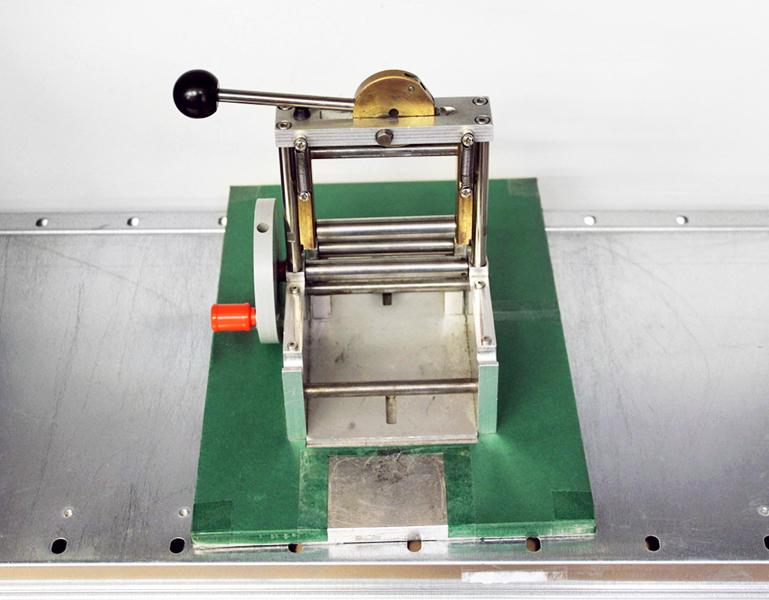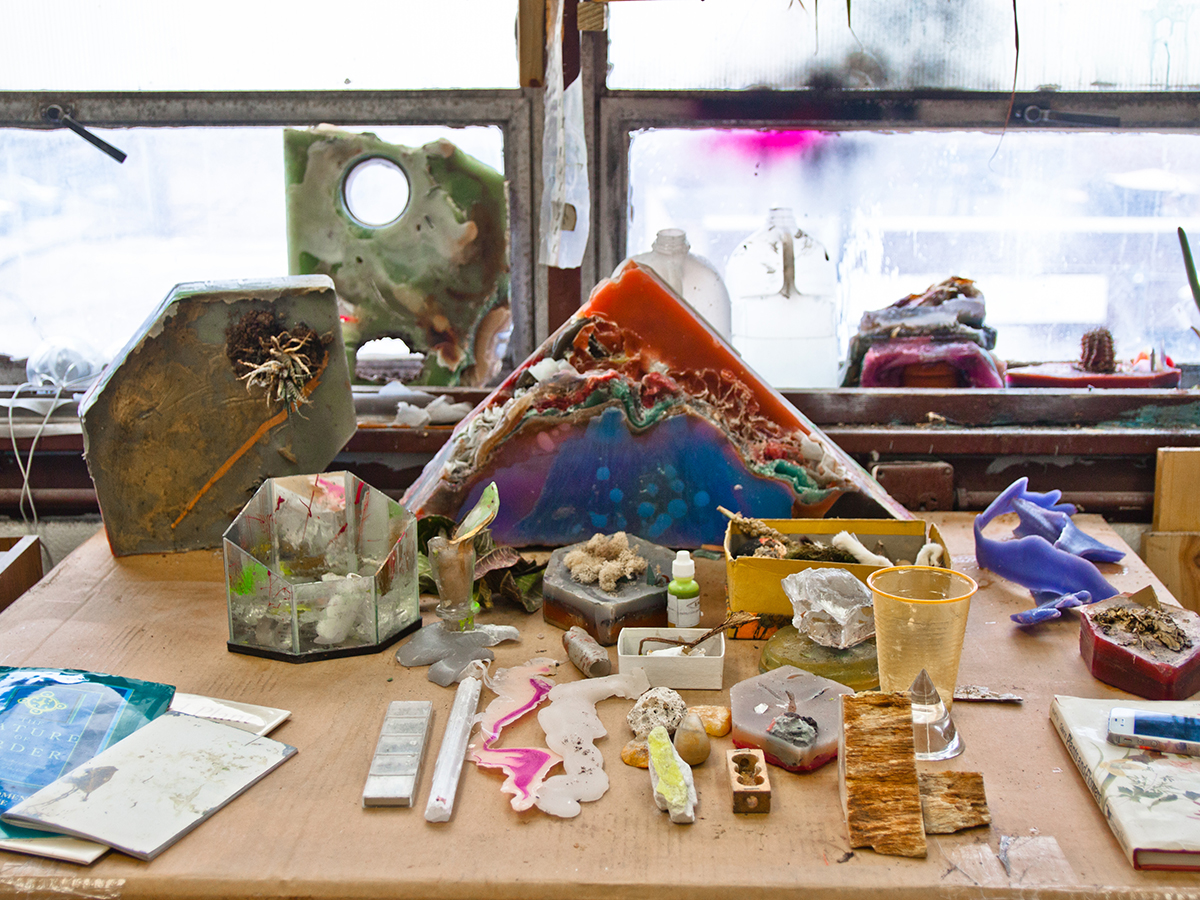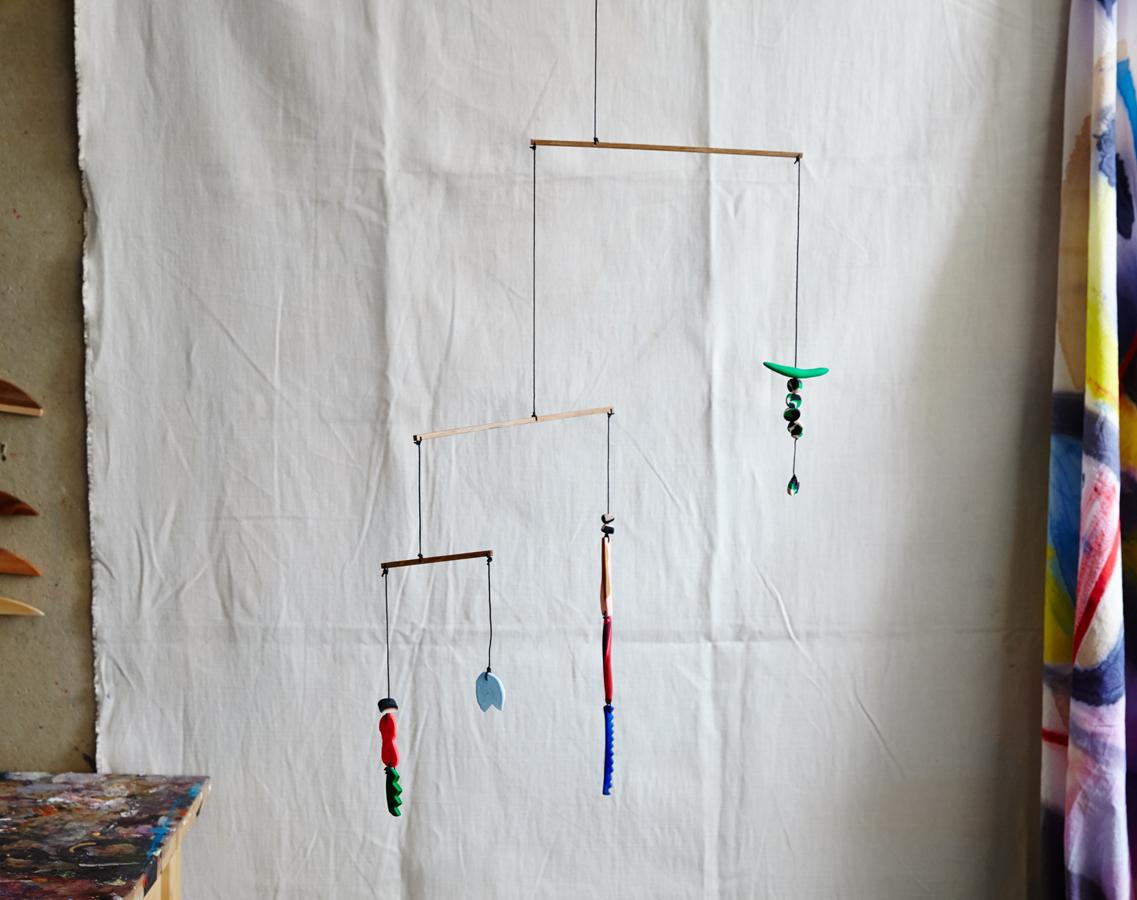
10.22.14
The Making of
Make a Sculpey Mobile, With Fort Makers
The team behind Fort Makers don’t refer to themselves as a design studio but rather an “artist collective,” and there’s a marked difference: They make functional objects, but instead of producing a stream of products with a unified aesthetic, they each work individually under the studio umbrella, experimenting with whatever interests them at any given time. In a way, it’s that same sense of structureless structure that first attracted Noah Spencer to the idea of making mobiles: You can hang pretty much anything from them, as long as you get the balance right. “Any kind of visual language can be carried into the mobile world,” says Spencer, a Paul Loebach and Uhuru Design alum who co-founded Fort Makers in 2008. While he primarily makes models hung with simple wooden shapes, he’s also been toying around lately with more expressive elements made from polymer clay (aka Sculpey), a method he graciously offered to teach Sight Unseen readers in this tutorial.
